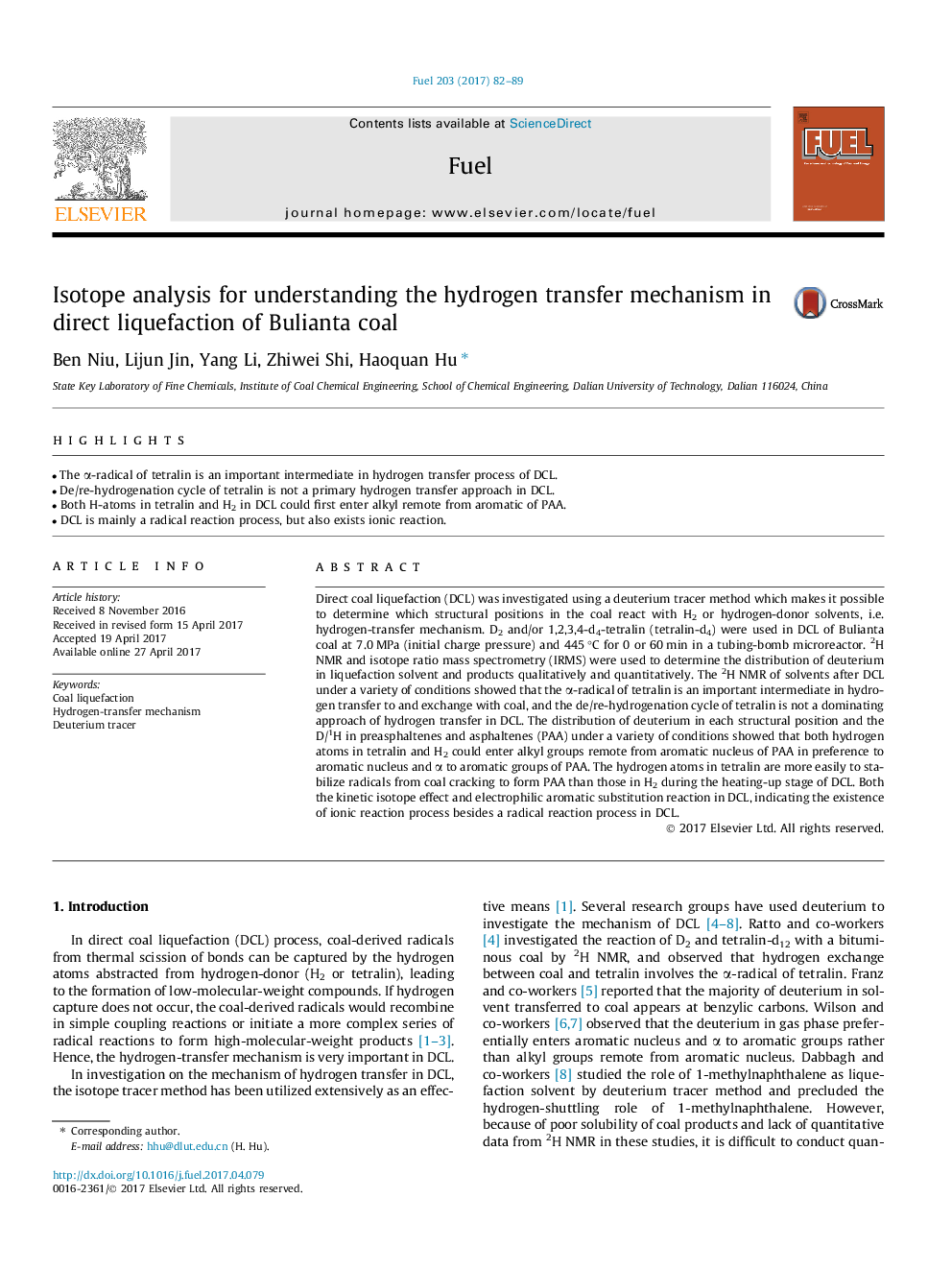| کد مقاله | کد نشریه | سال انتشار | مقاله انگلیسی | نسخه تمام متن |
|---|---|---|---|---|
| 6474266 | 1424961 | 2017 | 8 صفحه PDF | دانلود رایگان |

- The α-radical of tetralin is an important intermediate in hydrogen transfer process of DCL.
- De/re-hydrogenation cycle of tetralin is not a primary hydrogen transfer approach in DCL.
- Both H-atoms in tetralin and H2 in DCL could first enter alkyl remote from aromatic of PAA.
- DCL is mainly a radical reaction process, but also exists ionic reaction.
Direct coal liquefaction (DCL) was investigated using a deuterium tracer method which makes it possible to determine which structural positions in the coal react with H2 or hydrogen-donor solvents, i.e. hydrogen-transfer mechanism. D2 and/or 1,2,3,4-d4-tetralin (tetralin-d4) were used in DCL of Bulianta coal at 7.0 MPa (initial charge pressure) and 445 °C for 0 or 60 min in a tubing-bomb microreactor. 2H NMR and isotope ratio mass spectrometry (IRMS) were used to determine the distribution of deuterium in liquefaction solvent and products qualitatively and quantitatively. The 2H NMR of solvents after DCL under a variety of conditions showed that the α-radical of tetralin is an important intermediate in hydrogen transfer to and exchange with coal, and the de/re-hydrogenation cycle of tetralin is not a dominating approach of hydrogen transfer in DCL. The distribution of deuterium in each structural position and the D/1H in preasphaltenes and asphaltenes (PAA) under a variety of conditions showed that both hydrogen atoms in tetralin and H2 could enter alkyl groups remote from aromatic nucleus of PAA in preference to aromatic nucleus and α to aromatic groups of PAA. The hydrogen atoms in tetralin are more easily to stabilize radicals from coal cracking to form PAA than those in H2 during the heating-up stage of DCL. Both the kinetic isotope effect and electrophilic aromatic substitution reaction in DCL, indicating the existence of ionic reaction process besides a radical reaction process in DCL.
Journal: Fuel - Volume 203, 1 September 2017, Pages 82-89